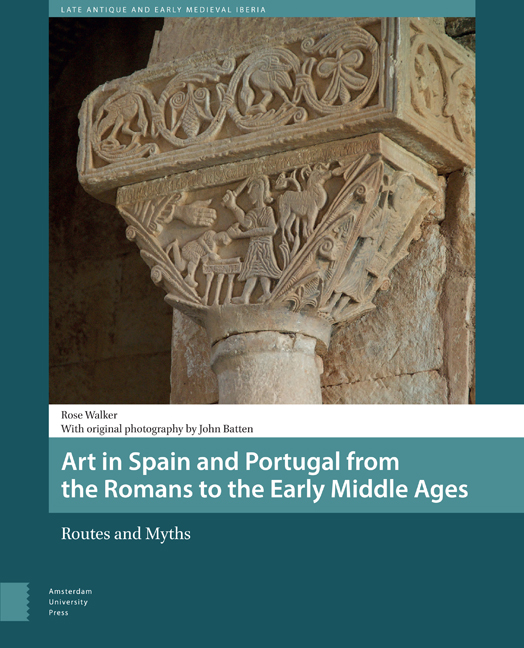Book contents
- Frontmatter
- Contents
- List of Illustrations
- Acknowledgements
- Conventions
- Abbreviations
- Introduction
- 1 The Lie of the Land: Art and Architecture Along the Roman Roads
- 2 Believing and Belonging: Late Antiquity and the Wider Mediterranean
- 3 The Visigothic Period: Fragmentation and Accretion
- 4 The Eighth and Ninth Centuries: Re-emergence and Invention
- 5 The Great Tenth Century
- 6 Dispersal After the Fall of the Caliphate
- 7 Trading Peace, Gold and Expertise, c. 1050-c. 1075
- 8 The Making of Romanesque: Reform and Synergy
- Epilogue
- Chronology 700-1100
- Bibliography of Cited Sources
- Index
3 - The Visigothic Period: Fragmentation and Accretion
Published online by Cambridge University Press: 12 February 2021
- Frontmatter
- Contents
- List of Illustrations
- Acknowledgements
- Conventions
- Abbreviations
- Introduction
- 1 The Lie of the Land: Art and Architecture Along the Roman Roads
- 2 Believing and Belonging: Late Antiquity and the Wider Mediterranean
- 3 The Visigothic Period: Fragmentation and Accretion
- 4 The Eighth and Ninth Centuries: Re-emergence and Invention
- 5 The Great Tenth Century
- 6 Dispersal After the Fall of the Caliphate
- 7 Trading Peace, Gold and Expertise, c. 1050-c. 1075
- 8 The Making of Romanesque: Reform and Synergy
- Epilogue
- Chronology 700-1100
- Bibliography of Cited Sources
- Index
Summary
Were the Visigoths exceptional builders and goldsmiths in the seventh century, or did they occupy pre-existing structures and acquire much of their metalwork? Did the Hispano- Romans preserve an unbroken Roman building tradition that set them apart from the other successor states of the empire? The range of answers that can be given to these questions will affect the rest of this book, because this problem bears patinas of ideological mystification that began in the eighth century and continue into the present. As Jerrilynn Dodds set out in her influential 1990 study, Architecture and Ideology in Early Medieval Spain, such questions concern the personality of modern Spain and pervade its historiography. The achievements of Visigothic Hispania were necessary for Sánchez-Albornoz's view of an unchanging Hispano-Roman essence that owed nothing to the Arabs or the Jews. He was prepared to accept only the rediscovery of earlier Roman traditions through contact with Byzantium. Américo Castro took the opposing view that saw the Spanish character moulded by interaction between Christians, Arabs, and Jews. The exchange of works of art, including the return of several Visigothic votive crowns between the governments of Franco and Petain in 1941, says much for the enduring and problematic symbolism of Visigothic culture, especially in a mid-twentieth century context.
In common with many scholars of medieval Spain, Dodds abjured the polarised debate between Sánchez-Albornoz and Américo Castro by seeking a middle way. She maintained the role of the Visigoths as patrons and above all as unconscious agents of an architecture that reflected the divided nature of the peninsula's population. This was predicated on a corpus of material that is at the heart of this dispute, and by including what I shall call the expanded group (San Juan de Baños, Santa Comba de Bande, Santa María de Quintanilla de las Viñas, San Pedro de la Nave, São Frutuoso de Montélios, and São Gião de Nazaré), Dodds aligned herself with those who see the Visigothic period as one of remarkable artistic achievement. Within Spain, Luis Caballero Zoreda has led a re-dating debate from which has come a generation of scholars who are providing some new answers that will inform this chapter.
- Type
- Chapter
- Information
- Art in Spain and Portugal from the Romans to the Early Middle AgesRoutes and Myths, pp. 105 - 138Publisher: Amsterdam University PressPrint publication year: 2016



